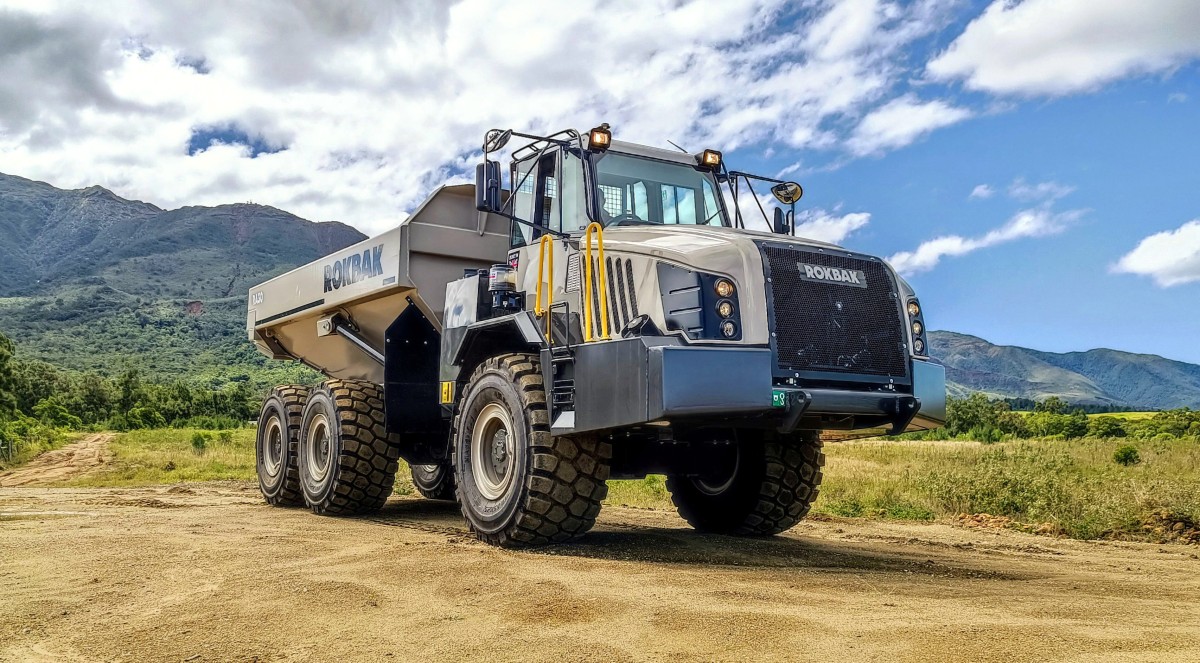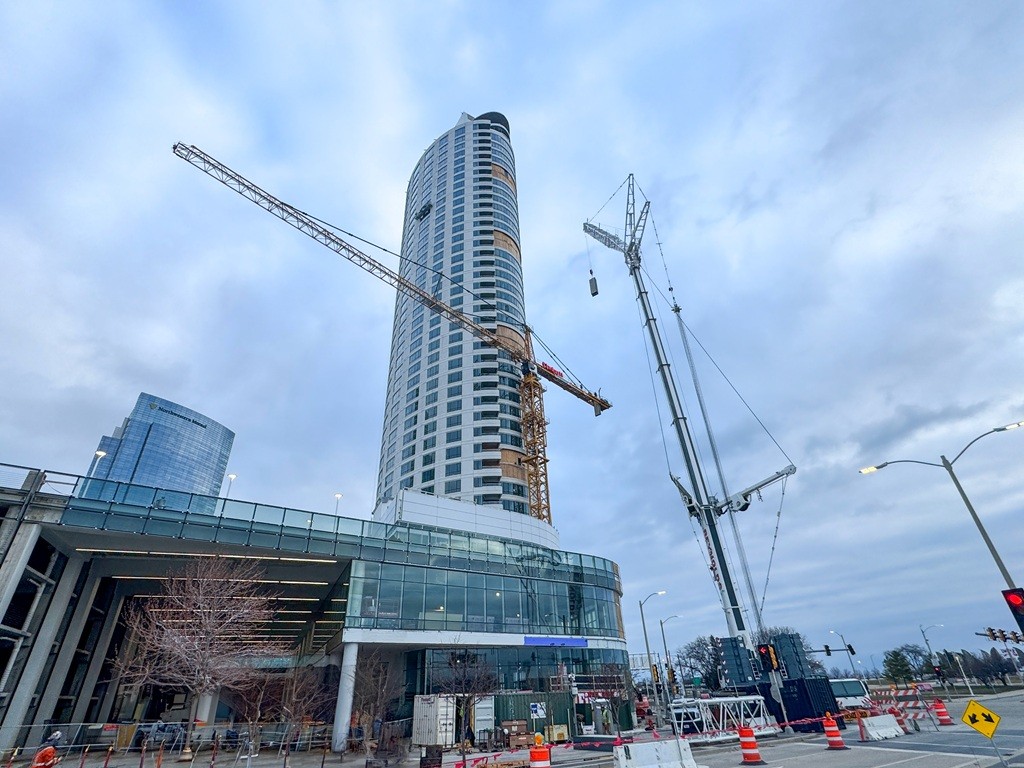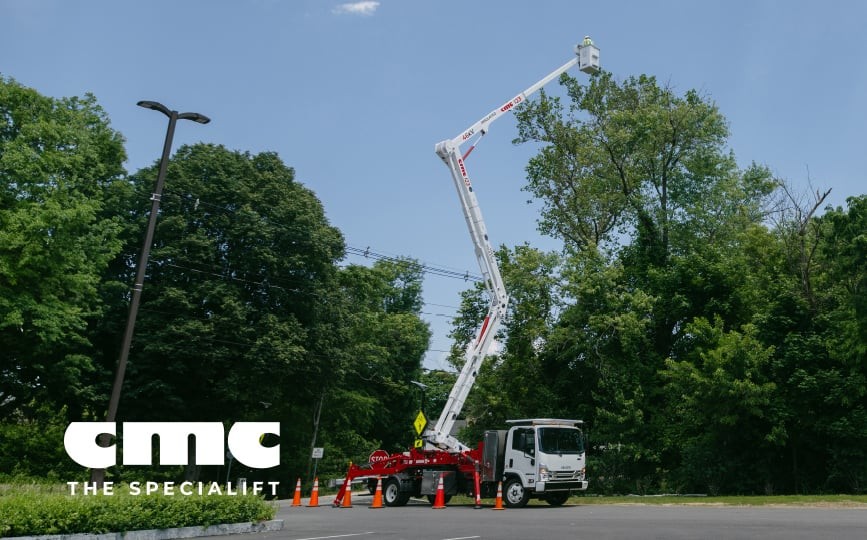Home \ International \ Atlas 1604 ZW: an expert on Rail & Road
Atlas 1604 ZW: an expert on Rail & Road
08/02/2018
Pubblicato da Redazione
Atlas 1604 ZW lifts out a track section and places it next to the railroad tracks. The 115 kW/157 HP Tier 4 final engine and AWE4 hydraulic system provide the power and stability for the 22-ton excavator to lift and move weights of up to 15 tons
Seemingly effortless, the Atlas 1604 ZW lifts out a track section and places it next to the railroad tracks. The 115 kW/157 HP Tier 4 final engine and AWE4 hydraulic system provide the power and stability for the 22-ton excavator to lift and move weights of up to 15 tons. Its capabilities are highly valued for repairing the dilapidated stretch of the railroad line between Buxtehude and Bremervoerde in the north of Germany. The Atlas excavators is part of the machinery fleet of H. F. Wiebe GmbH & Co. KG who are based in Achim and have a special, very experienced department for track construction. The company belongs to the Wiebe Group, which has a total staff of 1,300 employees. Support for Wiebe is provided by the Lauenbrueck-based Atlas dealer Atlas von der Wehl.
Top performance due to excellent excavator design
The Tier 4 final engine is fitted with a diesel particle filter with passive, continuous regeneration. This ensures minimum emission of pollutants. The cocooned engine has a noise level of 97 dB outside and 71 dB inside the cab, so having a conversation next to the excavator or inside the cab is not a problem at all. Safety is essential in hydraulic systems, hence the 1604 ZW’s AWE 4 hydraulics feature a primary and a secondary protection against overloading and break protection in the circulation system and boom cylinder. The undercarriage with its two planetary axles has a fully hydraulic drive, and the gears for road and off-road travel as well as inching are infinitely adjustable from the cab.
The 1604ZW is a true allrounder. It can work with 16 different attachment tools, including flail type mower unit, vibration driver, and hydraulic breaker, to name only a few. The tools are adjustable via potentiometer from the cab.
Fast and smooth transfer from road to rail
For rail operation, the track width is 1,435mm. The Atlas 1604 ZW is equipped with a patented computer-controlled contact pressure regulation system. Depending of pre-selected operating status and position of the boom system, the track wheel cylinders are controlled individually and the front and rear track axles can be engaged separately, which makes rerailing and derailing a whole lot easier and significantly reduces tire wear. It is amazing to watch how quickly the Atlas machine transfers from road to rail – not only on the road and level ground but on dirt roads or open track as well. In order to extend its reach, this Atlas rail-road excavator is equipped with a special boom of 3,700mm instead of 3,300mm. Of course, the slewing limitation, operated via an electronic, infinitely adjustable rotation angle sensor, is a standard feature.
“Control center” with an excellent panoramic view
The new double cab is the control center of the 1604 ZW. Seven powerful LED lamps brightly illuminate the work area. The data on the various displays for controlling the excavator are clearly visible even in bright sunlight. In addition, the cab is fitted with heat-absorbing glass, its front panel can be opened and slid under the roof, and it is also equipped with heating and air-condition. For an optimum of ergonomics and comfort, the driver can adjust the steering column and the comfort seat separately from the operating panels. The clearly visible color monitor of the rear view camera also ensures safety. Another detail of the sophisticated cab design: the windscreen wipers are mounted at the bottom, outside field of vision, thus providing an unobstructed view of the work area.
Making the tracks safe again
The track section Buxtehude-Bremervörde kept causing delays because trains had to slow down on the dilapitated stretch of the line and, for safety purposes, could only travel cautiously here. Now the tracks, ballast bed, and substructure are being replaced and two layers of subgrade protection, Geotex fleece separation and ballast are laid on the soft, peaty ground. Then the rails are mounted.
The total stretch to be repaired is about 700 meters long. As soon as the work is done – with the help of the Atlas 1604 ZW – the trains will be “back on track”.

Ultime notizie di Atlas

Earthmoving Machinery
26/01/2024
Brand name weycor for Atlas Weyhausen products
Atlas Weyhausen GmbH introduced the new weycor brand in 2016...
Earthmoving Machinery
22/11/2023
The Atlas armoured excavator: a world first
Atlas excavator 225 LC converted especially for munitions cl...
Earthmoving Machinery
29/10/2023
An Atlas 190W blue mobile excavator in hydraulic engineering
The ATLAS 190W blue mobile excavator with attached vibratory...
Earthmoving Machinery
27/07/2023
The Atlas excavator with the big "feet"
The ATLAS 140W excavator with ultra-wide tyres ensures perfe...
Earthmoving Machinery
12/05/2023
Four Atlas short-tail excavators in the team
Four Atlas mobile excavators 175 WSR in team operation at a...
Earthmoving Machinery
12/04/2023
Mobility in tree maintenance with the Atlas 190W mobile excavator
The Atlas 190W mobile excavator makes tree maintenance and f...
Altri International

International
21/11/2024
Kleemann: New compact crusher used for recycling
Impact crusher MOBIREX MR 100i NEO impresses during operatio...
International
21/11/2024
SITECH partners with Royal Engineers to create poppy and demonstrate tech offering
The demostration involved creating a ground-level poppy desi...

International
20/11/2024
Strong and stable RA30 trucks carry the weight at New Caledonian mine
Three Rokbak RA30 trucks are delivering exceptional durabili...

International
20/11/2024
Tadano AC 7.450-1 Performs Double Duty in Wisconsin
A cost-saving and versatile solution was already on site - a...

International
19/11/2024
Liebherr Tower Cranes and John Paul Construction celebrate 50 years of partnership
Irish construction company John Paul Construction is celebra...

International
18/11/2024
The CMC i23 aerial platform: an example of high performances
CMC i23 is designed to maximise operational efficiency in al...










































